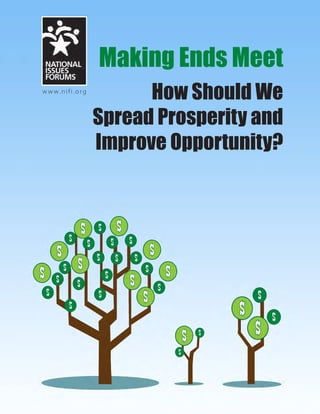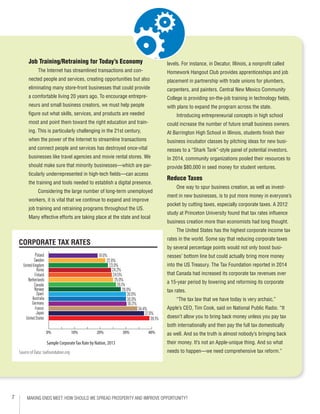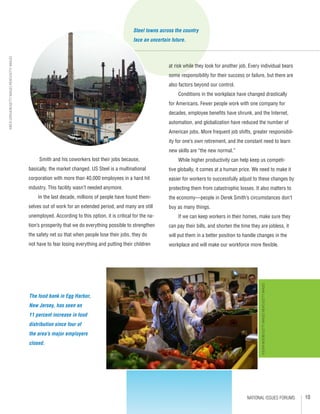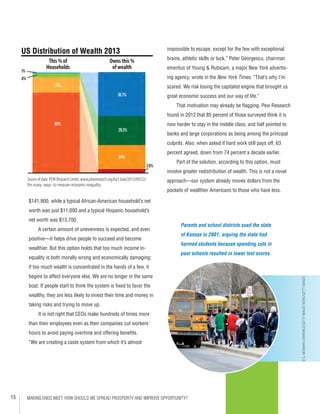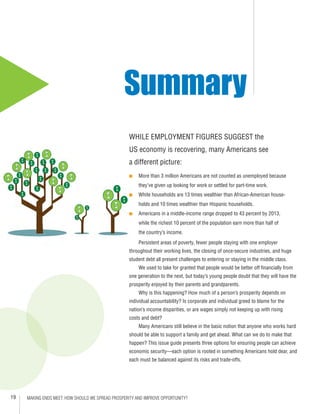This document outlines three options for how to spread prosperity and improve economic opportunity in the US:
Option 1 focuses on giving people the tools to start new businesses through reducing barriers to small business growth and providing job training programs.
Option 2 argues for strengthening the social safety net to ensure protections are in place for all.
Option 3 proposes reducing inequality by decreasing the large gaps between the wealthy and middle/lower classes to make it easier for people to enter the middle class.
The document provides context on the current economic challenges many Americans face in achieving economic security and pros and cons of each approach to spark deliberation on possible solutions.
